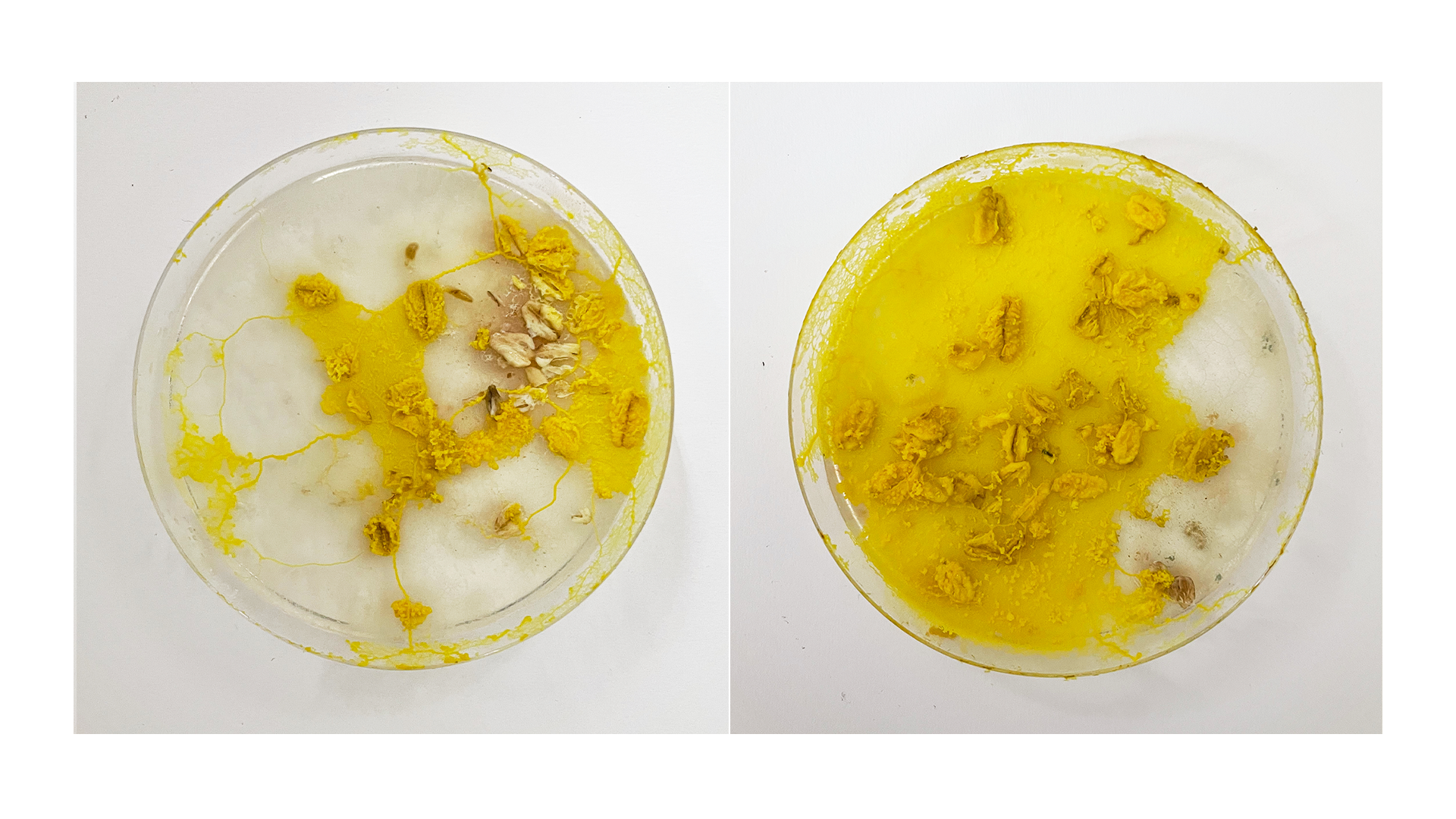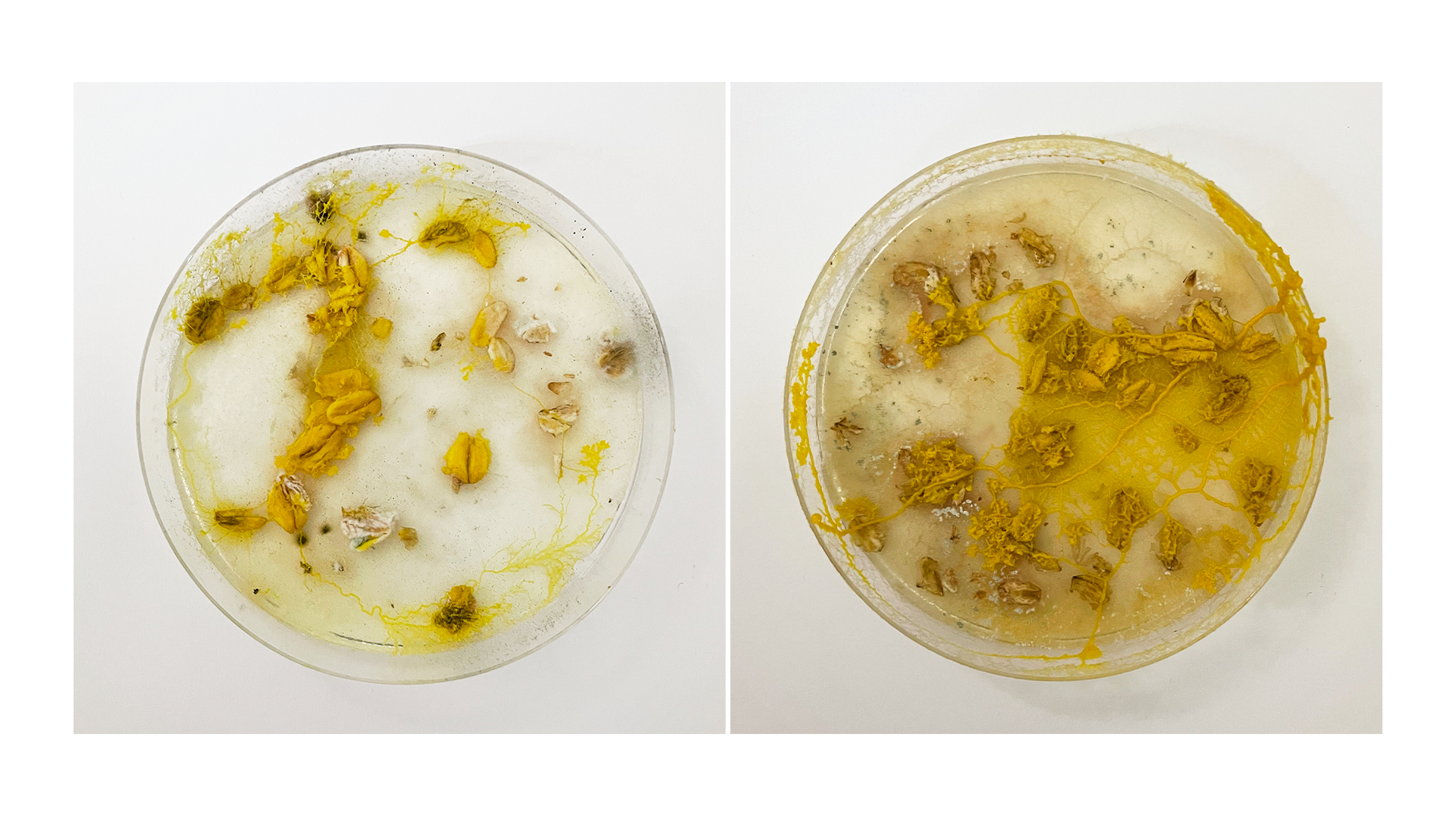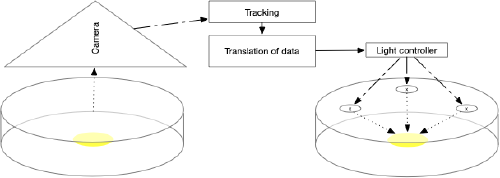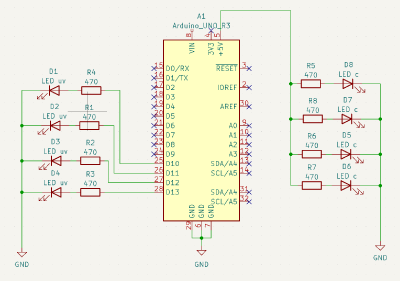(Created page with " == 22/4/2021 == My desk is now a co-working space. I work and organisms are growing. Two of three organisms are growing very well and fast. About 150mm to 200mm. The third...") |
|||
| (26 intermediate revisions by 3 users not shown) | |||
| Line 1: | Line 1: | ||
= A social network for microorganisms = | |||
[[File:PhyComp1.png]] | |||
[[File:PhyComp2.png]] | |||
The photos show several samples of physarum polycephalum treated with pules of light at the same locations over the time of growing. These location where taken from another culture of the microorganism. | |||
It's remarable to see that in the absnt of light the physarum polycephalum which is not treated with light searches the whole dish for food and expands freely while a micoorganism which is treatet with light focuses on food sources. Also other microorganisms grow mor prominant in samples wich are treated with light. | |||
== Idea and concept == | |||
We use technology to connect each other. In the last years social media platforms emerged and gained popularity. | |||
Is the use of technology limited to humans or is it possible to develop and apply such a network to different worlds. Can technology be used to "talk" or interact with microorganisms and me or humans? | |||
[[File:dw.png|500px]] | |||
[[File:ezgif.com-video-to-gif.gif|550px]] | |||
Two cultures of microorganisms are connectet through a camera and UV-light sources. | |||
One organism functions as an influencer that takes over control over the life of the other organism. | |||
== Technical solutions == | |||
The position and or growing of the physarum is detected by a camera above the dish. | |||
To get stable and reliable readings, it is necessary to have a constant lightsource above. | |||
The image taken by the camera gets processed and controlls the lights using an arduino microcontroller. | |||
[[File:cqi.png|400px]] | |||
== Process == | |||
[[/Growing diary/]] | |||
== Inspiration and research == | |||
[https://www.researchgate.net/publication/41111573_Rules_for_Biologically_Inspired_Adaptive_Network_Design Rules for Biologically Inspired Adaptive Network Design] | |||
Latest revision as of 15:55, 14 July 2021
A social network for microorganisms
The photos show several samples of physarum polycephalum treated with pules of light at the same locations over the time of growing. These location where taken from another culture of the microorganism. It's remarable to see that in the absnt of light the physarum polycephalum which is not treated with light searches the whole dish for food and expands freely while a micoorganism which is treatet with light focuses on food sources. Also other microorganisms grow mor prominant in samples wich are treated with light.
Idea and concept
We use technology to connect each other. In the last years social media platforms emerged and gained popularity. Is the use of technology limited to humans or is it possible to develop and apply such a network to different worlds. Can technology be used to "talk" or interact with microorganisms and me or humans?
Two cultures of microorganisms are connectet through a camera and UV-light sources. One organism functions as an influencer that takes over control over the life of the other organism.
Technical solutions
The position and or growing of the physarum is detected by a camera above the dish. To get stable and reliable readings, it is necessary to have a constant lightsource above. The image taken by the camera gets processed and controlls the lights using an arduino microcontroller.



